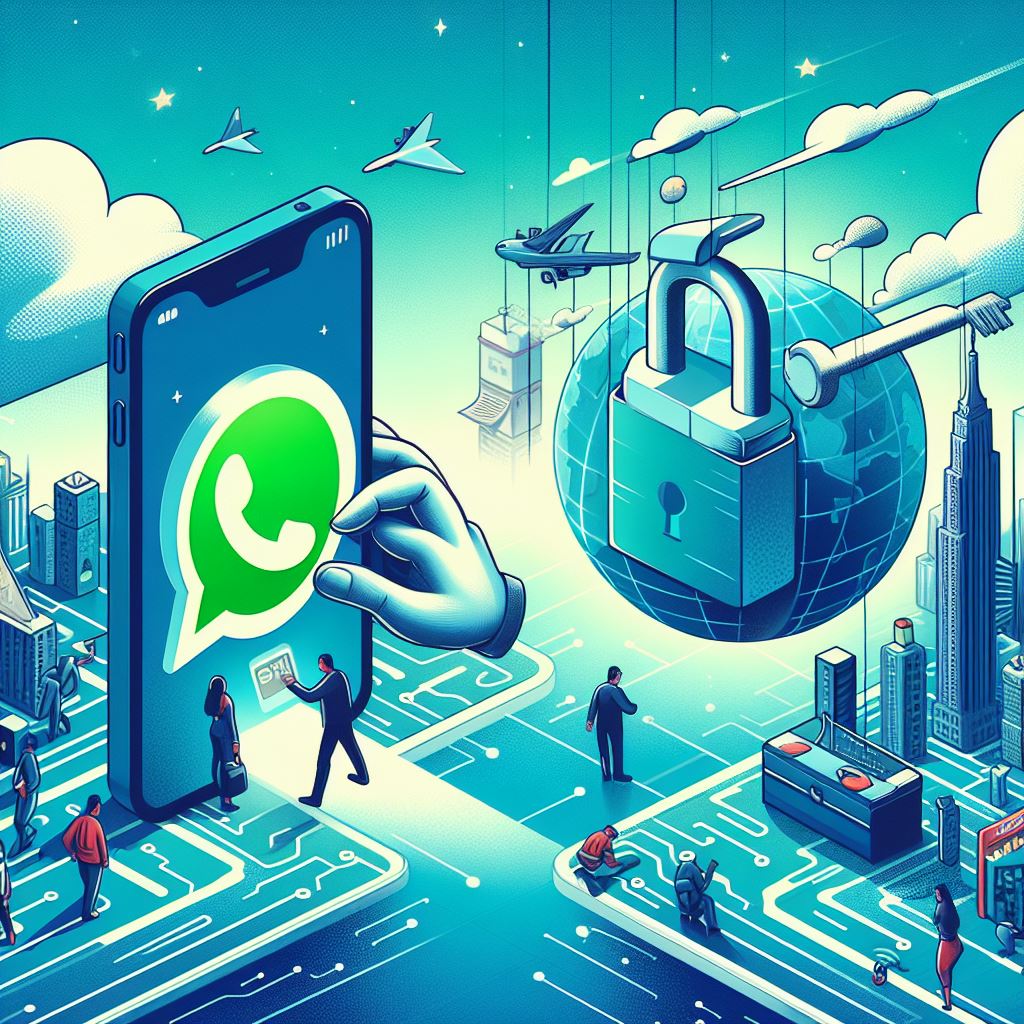WhatsApp has prioritized user privacy by making end-to-end encryption a core feature. This encryption scrambles messages, photos, and calls, ensuring only you and the recipient can access the content. However, there might be situations where you consider disabling it for your backups. This article explores both the processes of enabling and disabling while emphasizing the security considerations.
Important Note: Disabling end-to-end encryption weakens your backups. Before proceeding, understand the implications and weigh the risks and benefits.
What is End-to-End Encryption?
End-to-end encryption is a security measure that encrypts the data on the sender’s device before transmitting it to the server. And it can only be decrypted on the intended receiver’s device. This process bars any third party from accessing the data, even the app or service you are using to send such messages. Even if someone catches a scrambled message you send on WhatsApp, it will just look like gibberish (letters, symbols, and numbers) to them. They won’t be able to read it unless they have a special key to unlock it.
Enabling End-to-End Encryption for Backups (WhatsApp Mobile App):
Please note that WhatsApp’s end-to-end encryption is always enabled for all chats and cannot be turned off for individual chats or calls. However, you can enable end-to-end encryption for chat backups.
Here’s how:
- Launch the WhatsApp app on your phone.
- On the top right corner, Tap the Three-Dot Menu.
- Select “Settings.”
- Go to “Chats” and then “Chat Backup.”
- Tap “End-to-End Encrypted Backup.”
- Select “Turn on” and enter your password or 64-digit encryption key when prompted.
- Confirm by tapping “Turn on” again.
Disabling End-to-End Encryption for Backups (WhatsApp Mobile App):
If you wish to disable end-to-end encryption for chat backups, follow these steps:
- Launch the WhatsApp app on your phone.
- On the top right corner, Tap the Three-Dot Menu.
- Select “Settings.”
- Go to “Chats” and then “Chat Backup.”
- Tap “End-to-End Encrypted Backup.”
- Select “Turn off” and enter your password or 64-digit encryption key when prompted.
- Confirm by tapping “Turn off” again.
Please remember that if you’ve forgotten your password and still have access to your WhatsApp, you can change your password. If you’ve forgotten your password and don’t have access to your WhatsApp, you can’t restore your encrypted backup. WhatsApp can’t send you a copy of your password, reset your password, or restore your backup for you.
What Can’t Be Disabled?
End-to-End Encryption for Chats: It’s crucial to understand that disabling end-to-end encryption applies only to your chat backups, not your live chats. The real-time communication between you and your contacts remains encrypted.
WhatsApp Web Doesn’t Offer Backup Options:
Since WhatsApp Web relies on your phone for functionality, there’s no separate backup option on WhatsApp Web. Disabling end-to-end encryption on your phone will automatically apply to backups accessed through WhatsApp Web.
Security Implications of Disabling Encryption:
- Vulnerable Backups: Without encryption, anyone who gains access to your backup (cloud storage or local device) can view your messages and media. This includes unauthorized users, hackers, or even cloud storage providers (depending on their terms of service).
- Legal Concerns: In some jurisdictions, law enforcement might request access to your unencrypted backups during investigations. End-to-end encryption provides an extra layer of protection in such scenarios.
Alternatives to Disabling Encryption:
Regular Chat Exports: You can export individual or group chats (without media) as text files. These are not encrypted but offer a basic way to preserve chat history without compromising your entire backup.
Strong Backup Security: If you must disable encryption, ensure your cloud storage provider offers robust security features like two-factor authentication and encryption at rest.
Conclusion
Disabling end-to-end encryption for WhatsApp backups is a privacy trade-off. It offers easier access to your chat history in case of data loss but weakens its security. Consider alternative solutions or prioritize strong backup security measures if you choose to proceed. Remember, WhatsApp prioritizes user privacy – for the most secure communication, keep end-to-end encryption enabled.
Disclaimer: This article is for informational purposes only. Disabling End-to-End Encryption may reduce the security of your messages and make them accessible to others. Always consider the implications of disabling security features and proceed with caution.”

